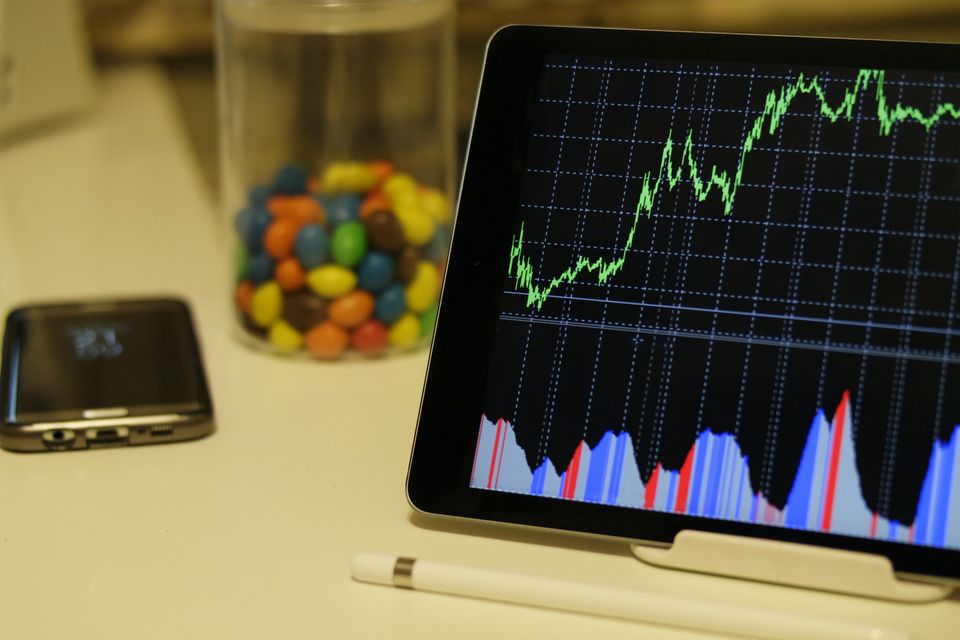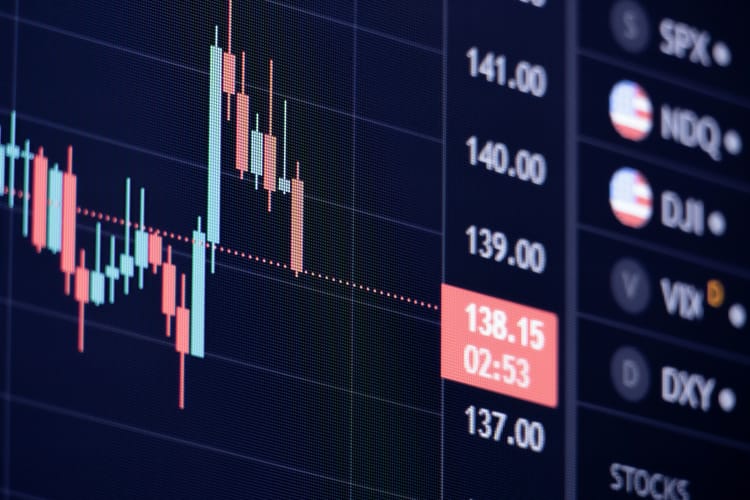How High Probability Trading Signals can improve your trading results

It’s the trading floor of the NYSE; the year is 1985, ringing telephones, the clatter of typewriters, and the urgent whispers of traders seeking the next big opportunity.
Mike approached John, his colleague, for a tip—a tip for a stock purchase that would potentially change the course of their trading strategies. "That Technology Stock XX," John said, leaning in conspiratorially, "they're on the verge of something big, a groundbreaking partnership that could send their stock soaring."
Mike returns to studying the ticker tape, contemplating whether to act on John's tip.
READ ON OUR BLOG TO KNOW WHAT WAS THIS STOCK XX.
This scene paints a vivid picture of the roots of trading signals, where tips exchanged between traders were the heartbeat of market intelligence.
Fast forward to today, and the landscape has transformed. Trading signals have evolved from informal tips to sophisticated algorithms driven by artificial intelligence that power today's financial markets.
In this blog, we explore the trading signals, Their various types, and how we can set the trading signals and reap their benefits.
So, Let's dive into the combination of information, strategy, and opportunity!
What are Trading Signals?
Trading signals are indicators or cues derived from various analysis forms that guide traders about potential buy or sell opportunities.
These signals are generated by interpreting market data, charts, technical indicators, or fundamental analysis. The goal of trading signals is to help traders make informed decisions based on the identified trends, patterns, or conditions in the market.
Now, let's have a look at where the story started!
Evolution of Trading Signals: From Trader Tips to Advanced Algorithms:
Trading signals have evolved significantly over the years, transforming from simple trader tips to sophisticated algorithmic strategies.
1. Trader Tips:
As discussed in the opening paragraph, the early days of trading signals were marked by informal exchanges of tips and recommendations among traders. This grassroots method involved traders sharing insights, often communicated through word of mouth or informal channels. While trader tips continue to play a role in the market, they coexist with more advanced and systematic approaches.
2. Technical Analysis Signals:
As markets matured, traders sought more structured and data-driven approaches. The advent of technical analysis shifted towards signals derived from studying historical price charts and patterns.
At its core, technical analysis is a method that relies on the premise of
"History Repeats itself."
By analyzing past market data, traders attempt to predict future price directions and potential turning points. The primary goal is to comprehensively understand the market's behavior and use this knowledge to make calculated decisions.
Technical analysis signals form the basis of this informed decision-making. These signals are derived from studying historical price charts and patterns, providing analysts with valuable insights into potential market movements. Utilizing a variety of indicators, including but not limited to moving averages, RSI (Relative Strength Index), and MACD (Moving Average Convergence Divergence), technical analysts identify trends, pinpoint support and resistance levels, and ultimately guide their trading strategies.
Also Read: Swing Trading: How Stock Scanners Can Help in Identifying Opportunities
3. Fundamental Analysis Signals:
While technical analysis relies on historical price data to predict future market movements, traders realized that this approach may lose its efficacy when confronted with sudden and impactful fundamental changes in recent times.
Simultaneously, the importance of fundamental analysis signals grew. Traders began incorporating economic indicators, corporate earnings reports, and geopolitical events into their decision-making processes. This approach provided a broader understanding of market dynamics and allowed for a more comprehensive evaluation of the intrinsic value of assets.
While technical analysis signals provide insights into short-term price movements, entry/exit points, and trend reversals, fundamental analysis signals offer a deeper understanding of the intrinsic value of an asset. By combining these signals, traders can adapt their strategies to the evolving market conditions.
4. Sentiment Analysis Signals:
While technical analysis and fundamental analysis are integral components of making informed trading decisions, their efficacy can only be significantly limited if one pays attention to the importance of sentiment analysis. ; With a thorough understanding and control of market sentiment, even the most well-crafted technical and fundamental analyses may be able to capture the full picture of the market dynamics.
A Knowledge nugget!
The Fear & Greed Index, developed by CNN Business, serves as a valuable tool for measuring investor sentiment in the financial markets.It is grounded in the idea that extreme levels of fear tend to drive down share prices, creating potential buying opportunities, while excessive greed can lead to inflated stock prices, indicating a possible overvaluation.
Recognizing the impact of market sentiment, traders turned to sentiment analysis signals. By gauging social media trends, news sentiment, and other factors influencing collective market mood, traders gained insights into potential market movements. Sentiment analysis became especially crucial during times of uncertainty or unexpected events that could rapidly shift market sentiment.
When incorporated into the broader framework of trading signals, Sentiment analysis signals empower traders to anticipate potential market movements based on historical data and fundamental factors and adapt to the dynamic shifts in sentiment. This adaptive approach is essential for navigating financial markets' nuanced and often unpredictable nature.
Also Read: Psychological Pitfalls in Trading: Historical Case Studies
5. Algorithmic Learning and Artificial Intelligence:
You remember our piece on medium where we discussed AI Trading vs Algo Trading: Understanding the Key Differences and Benefits, this piece has some excellent knowledge on the comparatives of AI and Algorithms..
In essence,
The rise of technology brought forth a new era in trading with the introduction of algorithmic signals. Computer algorithms, designed to analyze vast amounts of market data in real-time, became instrumental in executing trades automatically based on predefined criteria.
Algorithmic trading combined with artificial intelligence (AI) brought efficiency, speed, and a systematic approach to the market, reducing the reliance on human decision-making.
As you know the history of trading signals, let’s have a look at ;
What are the Benefits of using Trading Signals
Trading Signals help traders mitigate emotional decisions, reduce guesswork, and enhance their overall trading strategy.
The biggest benefit of trading signals lies in their ability to provide traders with actionable insights and timely information, enhancing the potential for profitable trading outcomes. Here are key aspects that highlight the significant advantages of trading signals:
Timely and Informed Decision-Making:
The Most obvious and the most impactful benefit of Trading Signals.
The timing precision is crucial in capturing favorable price movements and maximizing profit potential.
Trading signals also offer traders well-researched information and analysis, empowering them to make informed decisions. By providing insights into potential market movements, signals assist in navigating the complexities of financial markets.
Risk Management:
Trading signals facilitate effective risk management.
- Risk-Reward Ratio: Trading signals often come with suggested risk-reward ratios, indicating the potential gain relative to the potential loss. Traders can use this information to assess whether a trade aligns with their risk tolerance. Establishing a favorable risk-reward ratio is a fundamental aspect of risk management, helping traders avoid excessive exposure.
- Setting Stop-Loss Levels: A key component of risk management is setting appropriate stop-loss levels. Trading signals provide insights into where stop-loss orders can be strategically placed based on the signal's analysis. This predefined exit strategy limits potential losses, safeguarding capital in adverse market movements.
- Take-Profit Targets: Similarly, trading signals often come with suggested take-profit levels. This aspect of the signal helps traders establish clear profit-taking targets. Having predefined profit levels allows traders to secure gains at strategic points, mitigating the risk of letting profitable positions turn into losses due to indecision.
Efficient Capital Allocation:
Signals aid in efficiently allocating capital by guiding traders toward opportunities that align with their risk tolerance and overall strategy. This prevents over-concentration in high-risk positions and helps diversify the portfolio, reducing the impact of potential losses on the overall capital.
Objective Criteria:
Technical indicators are numerical representations of market data. These metrics are derived from mathematical calculations applied to historical price movements. By relying on these quantifiable metrics, trading signals based on technical analysis introduce objectivity into the analysis. Traders can interpret these indicators without the interference of emotions, ensuring a rational and systematic evaluation of market conditions.
Emotions, such as fear and greed, can significantly impact trading decisions. Subjective judgments influenced by emotional states may lead to impulsive actions and deviate from a well-thought-out strategy. Objective criteria in trading signals act as a counterbalance to emotions. Traders can rely on concrete, data-driven signals, reducing the likelihood of making decisions influenced by momentary emotional fluctuations.
How to Setup Trading Signals. A three-blue Print
Setting up trading signals is a pretty straightforward process in software like AfterPullBack. The process can be completed in 3 easy steps;
· Step-1: Setup Market Scanner Conditions :
· Step 2- Define Signal Rules:
· Step 3: Connect and Activate:
Let's explain each in detail;
Step-1: Set Up Market Scanner Conditions:
Before generating a trading signal, traders typically start by creating a market scanner. A market scanner systematically scans financial instruments, such as stocks, currencies, or commodities, to identify specific conditions or patterns that align with predefined criteria. They do this by defining the exact details that should be treated as valid detections or signals. These details can be based on various factors, including a custom trading strategy and technical or fundamental analysis.
Technical Data: Traders may use technical data as part of the detection criteria in the market scanner. This could include conditions such as a specific chart pattern formation, a crossover of moving averages, or overbought/oversold conditions as indicated by technical indicators like the Relative Strength Index (RSI).
Fundamental Data: Traders can incorporate fundamental data into the market scanner's detection criteria. For instance, the scanner might look for stocks with positive earnings surprises or those in industries experiencing favorable economic conditions.
Custom Strategy: Traders often have unique trading strategies tailored to their preferences and objectives. This can also include strategies with a combination of technical and fundamental data. The market scanner allows them to incorporate these strategies into the detection criteria.
Step 2- Define Signal Rules:
After setting up the market scanner, the subsequent step is to define signal rules.
Signal rules are a set of conditions and instructions that govern how a trader should respond when the market scanner identifies a potential trading opportunity. Depending on the trader's strategy and preferences, these rules can encompass various factors, including technical indicators, price patterns, or fundamental metrics.
In software like AfterPullBacks Trading Signals, The line of action can be quite ingenious. The Trading Signals can;
· Send a simple notification to the trader indicating a potential opportunity; this can be through an SMS, email, or phone/desktop notification.
· Also, go a step further and execute the trades automatically based on the identified conditions.
· Still, go one more step further and record the trade automatically in the trading journal. Automated entries ensure that the identified opportunities are acted upon swiftly, removing the need for manual intervention. Concurrently, these automated actions are logged in a trading journal.
Step 3: Connect and Activate:
With both the market scanner and the signal rules in place, the next step involves connecting and activating these components. The connection ensures that when the market scanner identifies opportunities based on the predefined set of rules, it triggers the associated signal. This seamless integration allows for the automation of the trading process, reducing the need for constant manual monitoring.
Bonus Step!
Furthermore, In AfterPullback, the activated signal can serve additional purposes beyond immediate trade execution. It can log simulated trades based on real-time data, enriching existing backtests in the strategy backtester. This feature enables traders to evaluate the performance of specific strategies historically and in the current market conditions, providing a more accurate representation of strategy effectiveness.
Conclusion
As we conclude this exploration of trading signals, it's evident that they are more than mere indicators – they are the lifeline of informed decision-making. The power of trading signals can transform uncertainty into strategy and opportunity convergence.
Trade Smarter!
P.S: the tip in the opening paragraph could refer to the early days when Microsoft Corporation (ticker: MSFT) was gaining momentum. Microsoft, founded by Bill Gates and Paul Allen, indeed went on to become one of the most successful and influential technology companies globally, with its stock experiencing significant growth over the years.
But before we go, let's have a look at some;
Frequently Asked Questions- FAQs:
What Are Trading Signals?
Trading signals are indicators or notifications that suggest potential buying or selling opportunities in financial markets. These signals are generated through technical analysis, fundamental analysis, or a combination of both, and they aim to guide traders in making informed decisions.
How to Read Trading Signals?
Reading trading signals involves interpreting the information provided by the signal. Key components include the entry point, target price, stop-loss level, and the rationale behind the signal. Understanding technical indicators and chart patterns is crucial for effective signal analysis.
What Is the Safest Way to Use Trading Signals?
The safest way to use trading signals is to combine them with your research and analysis. Use signals as a tool for confirmation rather than sole decision-making. Additionally, practice risk management by setting stop-loss orders to limit potential losses.
What Do You Look for in a Trading Signal Service?
When choosing a trading signal service, look for a transparent track record of performance, clear communication of signals, and a methodology that aligns with your trading style. It's essential to consider the provider's reputation and reliability.
How Does a Stop-Loss Work with Trading Signals?
A stop-loss is a predefined level at which a trader exits a position to limit losses. When using trading signals, set a stop-loss order based on the risk-reward ratio suggested by the signal. This helps control potential losses in case the trade goes against you.
Are Forex Signals Useful in Making Profits, or Are They Scams?
Forex signals can be useful if they come from reputable sources. However, the market is also susceptible to scams. Verify the credibility of the signal provider and consider user reviews and testimonials before relying on any forex signals for trading decisions.
you can also try to ask from the signals provider its historical signals and see how they performed in the past to validate the efficiency
Is Paying for Trading Signals Profitable?
Paying for trading signals can be profitable if you choose a reliable and reputable signal provider. However, success depends on how well you integrate the signals into your trading strategy and risk management plan.
Should You Use Trading Signals?
Whether you should use trading signals depends on your trading style, experience, and risk tolerance. If you are a beginner, using signals can be educational, but always complement them with your analysis to make well-informed decisions.





